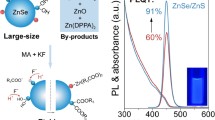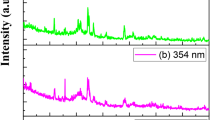Abstract
Exploiting the synergy between microstructure, morphology and dimensions by suitable nanomaterial engineering, can effectively upgrade the physical properties and material performances. Li2SnO3 elongated nano- and microstructures in form of belts, wires, rods and branched structures have been fabricated by a vapor-solid method at temperatures ranging from 700 to 900 °C using metallic Sn and Li2CO3 as precursors. The achievement of these new morphologies can face challenging applications for Li2SnO3, not only in the field of energy storage, but also as building blocks in optoelectronic devices. The micro- and nanostructures grown at 700 and 800 °C correspond to monoclinic Li2SnO3, while at 900 °C complex Li2SnO3/SnO2 core-shell microstructures are grown, as confirmed by X-ray diffraction and Raman spectroscopy. Transmission electron microscopy reveals structural disorder related to stacking faults in some of the branched structures, which is associated with the presence of the low-temperature phase of Li2SnO3. The luminescent response of these structures is dominated by intense emissions at 2, 2.5 and 3 eV, almost completely covering the whole range of the visible light spectrum. As a result, white-light emission is obtained without the need of phosphors or complex quantum well heterostructures. Enhanced functionality in applications such as in light-emitting devices could be exploited based on the high luminescence intensity observed in some of the analysed Li2SnO3 structures.

Similar content being viewed by others
Change history
14 November 2018
The article Li<Subscript>2</Subscript>SnO<Subscript>3</Subscript> branched nano- and microstructures with intense and broadband white-light emission, written by Miguel García-Tecedor, Javier Bartolomé, David Maestre, Achim Trampert, and Ana Cremades, was erroneously originally published electronically on the publisher’s internet portal (currently SpringerLink) on 14 November 2018 with abbreviated author first names. The original article has been corrected.
References
Pang, L. X.; Zhou, D. Microwave dielectric properties of low-firing Li2MO3 (M = Ti, Zr, Sn) ceramics with B2O3–CuO addition. J. Am. Ceram. Soc. 2010, 93, 3614–3617.
Fu, Z. F.; Liu, P.; Ma, J. L.; Guo, B. C.; Chen, X. M.; Zhang, H. W. Microwave dielectric properties of low-fired Li2SnO3 ceramics co-doped with MgO–LiF. Mater. Res. Bull. 2016, 77, 78–83.
Liu, C. W.; Wu, N. X.; Mao, Y. L.; Bian, J. J. Phase formation, microstructure and microwave dielectric properties of Li2SnO3-MO (M = Mg, Zn) ceramics. J. Electroceram. 2014, 32, 199–204.
Inagaki, M.; Nakai, S.; Ikeda, T. Synthesis and sintering of Li2SnO3. J. Nucl. Mater. 1988, 160, 224–228.
Moritani, K.; Moriyama, H. In situ luminescence measurement of irradiation defects in ternary lithium ceramics under ion beam irradiation. J. Nucl. Mater. 1997, 248, 132–139.
Idota, Y.; Kubota, T.; Matsufuji, A.; Maekawa, Y.; Miyasaka, T. Tin-based amorphous oxide: A high-capacity lithium-ion-storage material. Science 1997, 276, 1395–1397.
Courtney, I. A.; Dahn, J. R. Electrochemical and in situ X-ray diffraction studies of the reaction of lithium with tin oxide composites. J. Electrochem. Soc. 1997, 144, 2045–2052.
Fang, L.; Chowdari, B. V. R. Sn–Ca amorphous alloy as anode for lithium ion battery. J. Power Sources 2001, 97–98, 181–184.
Wang, Q. F.; Huang, Y.; Miao, J.; Wang, Y.; Zhao, Y. Hydrothermal derived Li2SnO3/C composite as negative electrode materials for lithium-ion batteries. Appl. Surf. Sci. 2012, 258, 6923–6929.
Zhao, Y.; Huang, Y.; Wang, Q. F.; Wang, X. Y.; Zong, M. Carbon-doped Li2SnO3/graphene as an anode material for lithium-ion batteries. Ceram. Int. 2013, 39, 1741–1747.
Zhao, Y.; Huang, Y.; Wang, Q. F.; Wang, X. Y.; Zong, M.; Wu, H. W.; Zhang, W. Graphene supported Li2SnO3 as anode material for lithium-ion batteries. Electron. Mater. Lett. 2013, 9, 683–686.
Huang, Y.; Wang, G. J.; Wu, T. H.; Peng, S. Y. Catalytic oxydehydrogenation of isobutane over lithium-based oxides. J. Nat. Gas Chem. 1998, 7, 102–107.
Zhao, Y.; Huang, Y.; Wang, Q. F. Graphene supported poly-pyrrole(PPY)/ Li2SnO3 ternary composites as anode materials for lithium ion batteries. Ceram. Int. 2013, 39, 6861–6866.
Zhang, D. W.; Zhang, S. Q.; Jin, Y.; Yi, T. H.; Xie, S.; Chen, C. H. Li2SnO3 derived secondary Li–Sn alloy electrode for lithium-ion batteries. J. Alloys Compd. 2006, 415, 229–233.
Belliard, F.; Irvine, J. T. S. Electrochemical comparison between SnO2 and Li2SnO3 synthesized at high and low temperatures. Ionics 2001, 7, 16–21.
Zhao, Y.; Li, X. F.; Yan, B.; Xiong, D. B.; Li, D. J.; Lawes, S.; Sun, X. L. Recent developments and understanding of novel mixed transition-metal oxides as anodes in lithium ion batteries. Adv. Energy Mater. 2016, 6, 1502175.
O’donnell, K. P.; Auf der Maur, M.; Di Carlo, A.; Lorenz, K.; the SORBET consortium. It’s not easy being green: Strategies for all-nitrides, all-colour solid state lighting. Phys. Status Solidi (RRL)–Rapid Res. Lett. 2012, 6, 49–52.
García-Tecedor, M.; Maestre, D.; Cremades, A.; Piqueras, J. Growth and characterization of Cr doped SnO2 microtubes with resonant cavity modes. J. Mater. Chem. C 2016, 4, 5709–5716.
García-Tecedor, M.; Maestre, D.; Cremades, A.; Piqueras, J. Tailoring optical resonant cavity modes in SnO2 microstructures through doping and shape engineering. J. Phys. D Appl. Phys. 2017, 50, 415104.
Vásquez, G. C.; Peche-Herrero, M. A.; Maestre, D.; Cremades, A.; Ramírez-Castellanos, J.; González-Calbet, J. M.; Piqueras, J. Cr doped titania microtubes and microrods synthesized by a vapor–solid method. CrystEngComm 2013, 15, 5490–5495.
Bartolomé, J.; Maestre, D.; Amati, M.; Cremades, A.; Piqueras, J. Indium zinc oxide pyramids with pinholes and nanopipes. J. Phys. Chem. C 2011, 115, 8354–8360.
Hodeau, J. L.; Marezio, M.; Santoro, A.; Roth, R. S. Neutron profile refinement of the structures of Li2SnO3 and Li2ZrO3. J. Solid State Chem. 1982, 45, 170–179.
Bolzan, A. A.; Fong, C.; Kennedy, B. J.; Howard, C. J. Structural studies of rutile-type metal dioxides. Acta Crystallogr., Sect. B 1997, 53, 373–380.
Tarakina, N. V.; Denisova, T. A.; Baklanova, Y. V.; Maksimova, L. G.; Zubkov, V. G.; Neder, R. B. Defect crystal structure of low temperature modifications of Li2MO3 (M = Ti, Sn) and related hydroxides. Adv. Sci. Technol. 2010, 63, 352–357.
Tarakina, N. V.; Denisova, T. A.; Maksimova, L. G.; Baklanova, Y. V.; Tyutyunnik, A. P.; Berger, I. F.; Zubkov, V. G.; Van Tendeloo, G. Investigation of stacking disorder in Li2SnO3. Z. Kristallogr. Suppl. 2009, 30, 375–380.
Livneh, T.; Lilach, Y.; Popov, I.; Kolmakov, A.; Moskovits, M. Polarized Raman scattering from a single, segmented SnO2 wire. J. Phys. Chem. C 2011, 115, 17270–17277.
EELS Atlas Database [Online]. Gatan Corporate. http://www.eels.info/atlas (accessed Apr 5, 2018).
Wang, Q. F.; Huang, Y.; Miao, J.; Zhao, Y.; Wang, Y. Synthesis and properties of carbon-doped Li2SnO3 nanocomposite as cathode material for lithium-ion batteries. Mater. Lett. 2012, 71, 66–69.
NIST X-ray Photoelectron Spectroscopy Database, NIST Standard Reference Database Number 20, National Institute of Standards and Technology, Gaithersburg MD, 20899 (2000), doi:10.18434/T4T88K.
Howard, J.; Holzwarth, N. First-principles simulations of the porous layered calcogenides Li2+xSnO3 and Li2+xSnS3. Phys. Rev. B 2016, 94, 064108.
Valerini, D.; Creti, A.; Lomascolo, M.; Manna, L.; Cingolani, R.; Anni, M. Temperature dependence of the photoluminescence properties of colloidal CdSe⁄ZnS core/shell quantum dots embedded in a polystyrene matrix. Phys. Rev. B 2005, 71, 235409.
Gaponenko, M. S.; Lutich, A. A.; Tolstik, N. A.; Onushchenko, A. A.; Malyarevich, A. M.; Petrov, E. P.; Yumashev, K. V. Temperature-dependent photoluminescence of PbS quantum dots in glass: Evidence of exciton state splitting and carrier trapping. Phys. Rev. B 2010, 82, 125320.
Cao, R. P.; Wang, W. D.; Zhang, J. L.; Jiang, S. H.; Chen, Z. Q.; Li, W. S.; Yu, X. G. Synthesis and luminescence properties of Li2SnO3: Mn4+ red-emitting phosphor for solid-state lighting. J. Alloys Compd. 2017, 704, 124–130.
Maestre, D.; Cremades, A.; Piqueras, J. Growth and luminescence properties of micro- and nanotubes in sintered tin oxide. J. Appl. Phys. 2005, 97, 044316.
Wiese, W. L.; Fuhr, J. R. Accurate atomic transition probabilities for hydrogen, helium, and lithium. J. Phys. Chem. Ref. Data 2009, 38, 565–720.
Kallel, W.; Bouattour, S.; Ferreira, L. F. V.; do Rego, A. M. B. Synthesis, XPS and luminescence (investigations) of Li+ and/or Y3+ doped nanosized titanium oxide. Mater. Chem. Phys. 2009, 114, 304–308.
López, I.; Alonso-Orts, M.; Nogales, E.; Méndez, B.; Piqueras, J. Influence of Li doping on the morphology and luminescence of Ga2O3 microrods grown by a vapor-solid method. Semiconduct. Sci. Technol. 2016, 31, 115003.
Henderson, B.; Imbusch, G. F. Optical Spectroscopy of Inorganic Solids; Clarendon Press: Oxford, 1989.
Shein, I. R.; Denisova, T. A.; Baklanova, Y. V.; Ivanovskii, A. L. Structural, electronic properties and chemical bonding in protonated lithium metallates Li2−x Hx MO3 (M= Ti, Zr, Sn). J. Struct. Chem. 2011, 52, 1043–1050.
Sathiya, M.; Rousse, G.; Ramesha, K.; Laisa, C. P.; Vezin, H.; Sougrati, M. T.; Doublet, M. L.; Foix, D.; Gonbeau, D.; Walker, W. et al. Reversible anionic redox chemistry in high-capacity layered-oxide electrodes. Nat. Mater. 2013, 12, 827–835.
Di Valentin, C.; Pacchioni, G.; Selloni, A. Origin of the different photoactivity of N-doped anatase and rutile TiO2. Phys. Rev. B 2004, 70, 085116.
Muthu, S.; Schuurmans, F. J. P.; Pashley, M. D. Red, green, and blue LEDs for white light illumination. IEEE J. Sel. Top. Quantum Electron. 2002, 8, 333–338.
Park, J. K.; Lim, M. A.; Kim, C. H.; Park, H. D.; Park, J. T.; Choi, S. Y. White light-emitting diodes of GaN-based Sr2SiO4: Eu and the luminescent properties. Appl. Phys. Lett. 2003, 82, 683–685.
Kim, J. S.; Jeon, P. E.; Park, Y. H.; Choi, J. C.; Park, H. L.; Kim, G. C.; Kim, T. W. White-light generation through ultraviolet-emitting diode and white-emitting phosphor. Appl. Phys. Lett. 2004, 85, 3696–3698.
Yamada, M.; Narukawa, Y.; Mukai, T. Phosphor free high-luminous-efficiency white light-emitting diodes composed of InGaN multi-quantum well. Jpn. J. Appl. Phys. 2002, 41, L246–L248.
Huang, C. F.; Lu, C. F.; Tang, T. Y.; Huang, J. J.; Yang, C. C. Phosphor-free white-light light-emitting diode of weakly carrier-density-dependent spectrum with prestrained growth of InGaN⁄GaN quantum wells. Appl. Phys. Lett. 2007, 90, 151122.
Acknowledgements
This work was supported by MINECO/FEDER/M-ERA.Net Cofund (Project MAT 2015-65274R, Project MAT 2016-81720-REDC and PCIN-2017-106). The authors are grateful to the spectromicroscopy beamline staff for useful advice on photoelectron spectroscopy measurements at the Elettra Synchrotron in Trieste. M. G. T. also wants to thank Mr. F. del Prado for his useful help on the analysis of the CL and PL results and Dr. G.C. Vásquez for his help with Vesta software.
Author information
Authors and Affiliations
Corresponding author
Additional information
The original version of this article was erroneously initially published with abbreviated author first names.
Electronic supplementary material
Rights and permissions
About this article
Cite this article
García-Tecedor, M., Bartolomé, J., Maestre, D. et al. Li2SnO3 branched nano- and microstructures with intense and broadband white-light emission. Nano Res. 12, 441–448 (2019). https://doi.org/10.1007/s12274-018-2236-0
Received:
Revised:
Accepted:
Published:
Issue Date:
DOI: https://doi.org/10.1007/s12274-018-2236-0




